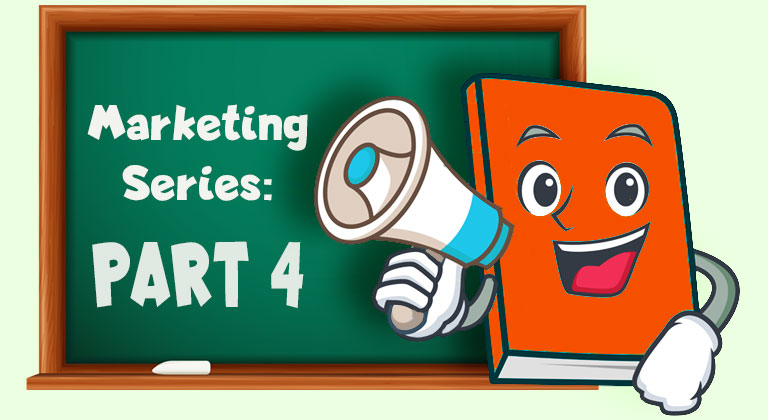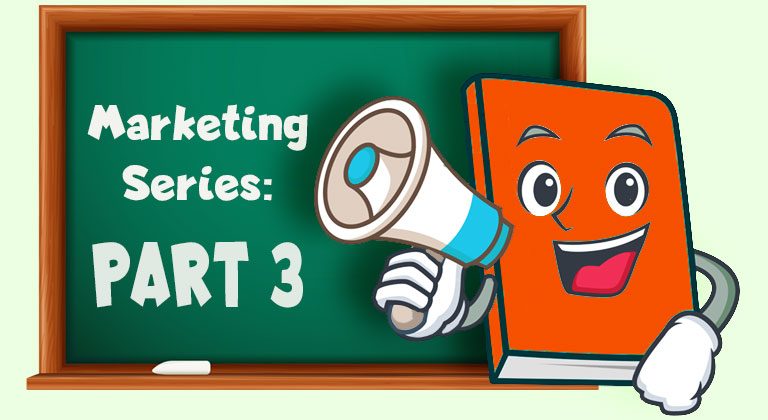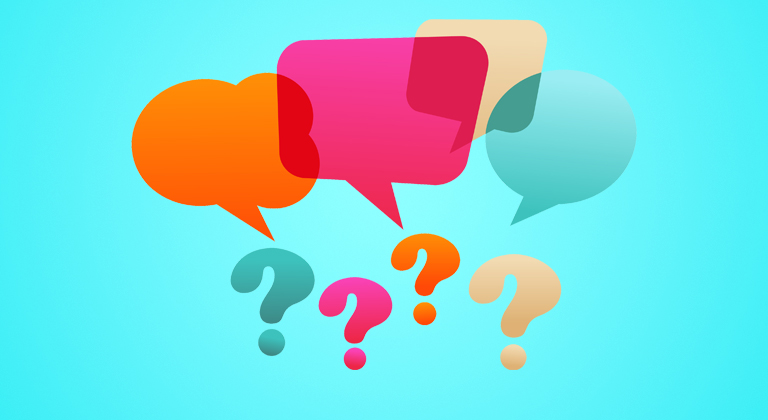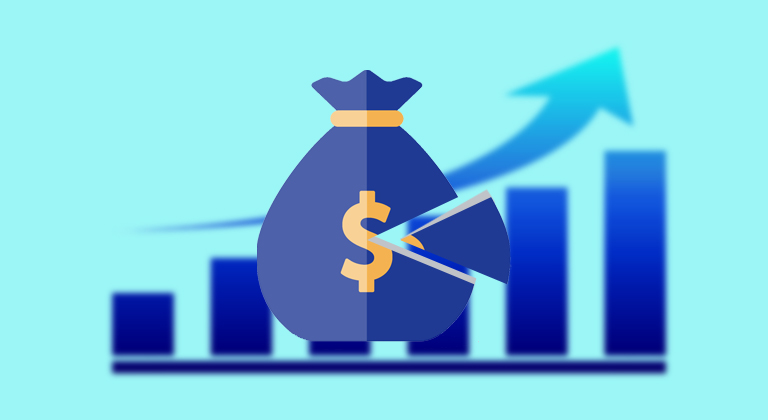Ginger’s Guide to Marketing & Advertising Your Books: Part Four – PROMOTIONS
Hitting ‘publish’ on your book is the biggest step in the road towards self-publishing success, but only the first one. In this final part of his four-part series, self-published author Ginger gives a top-level introduction to how to promote your book, using paid and free methods, to get as many potential customers to see it as possible.
Last week, we nearly broke the website with a massive post about advertising your self-published books – and we barely scratched the surface! In fact, as reader Erin Wright pointed out, there were other advertising opportunities we hadn’t even explored in that post; like Bookbub. We’ll be revisiting options like that in both the original post and future ones – so stay tuned, and don’t be shy about letting us know what you think we missed!
Today, though, we’re going to be looking at the adjacent avenue to advertising: Promotions.
There’s some crossover with promotions and advertising, depending on how you look at it, but I’m going to try and cover some holistic options that will offer you a chance to get your book in front of new potential readers as efficiently and effectively as possibly.
What is a promotion?
An advertisement is kind of static – it’s a message that tells potential readers where to go and what to do. A promotion, on the other hand, is more like an event. It leverages excitement and a limited-time opportunity to drive engagement with potential readers, instead of just giving them a message about your book.
Some examples – your book being available for free, or at a discounted price, or when it’s newly launched. Anything that makes the messaging around your book time-sensitive, relevant and actionable like:
- Limited time only! My book is available FREE from Amazon!
- Until Friday only, get my book for just $0.99! Regular price $2.99.
- NEW RELEASE! Be one of the first to read it!
There are various forms of promotional opportunities out there, and I can’t cover them all. However, this post should give you a good grounding in how to think about promotions; and you can experiment later with what works and what doesn’t. Promotions are more strategic than tactical; and over time a good self-published author will develop a program that works for them.
The key is to come up with an event – something happening around your book – and use that as the basis for your promotion. That’s what makes it more strategical – because to run a successful promotion on your book, you have to look at the big picture and work out what makes your book interesting and time-sensitive to potential readers.
The Secret Sauce: Stacking Promotions
When we discussed ads in part 3 of this series, I tried to give some ground rules about what does and doesn’t make a successful advertising campaign. In terms of promotion, there’s one rule I think is worth stressing – stack your promotions.
What does that mean? Well, ‘stacking’ is when you take one form of promotion, and then ‘stack’ another one on top of it… and then a third, and as many more as you have planned. Because promotions are events, you want to get as many pairs of eyes on your book during your promotional period as you can, and so you want to be strategic about timing as many different promotions – and even supporting advertisements – to coincide with it as possible.
In The Art of War, Chinese general Sun Tzu recommended storming a single point in a castle’s defenses with as many soldiers as possible – making an arrowhead, as opposed to a bludgeon – and that’s good philosophy with book promotions too. Concentrate your forces, and in theory they’ll each help amplify the other.
Amazon Promotions
Just like with marketing and advertising, Amazon actually offers the easiest and quickest way to start promoting your book – through exclusive opportunities you have as part of the Kindle Direct Publishing program. If you sign your book up as part of their KDP Select program – which does mean it needs to be exclusive to Amazon for 90 days – you’ll have the opportunity to run either a Kindle Countdown Deal or a Free Book Promotion at any point during that period.
Either option does what a promotion is supposed to do – create an event-based incentive for readers to grab a copy of your book – and they will actually market that for you through their own systems of algorithms and promotions. It’s the lowest-effort way to start getting your book out there, and in many ways offers some of the best returns (or, at least, it used to. More on that later.)
Here are how they work:
Free Book Promotion
One of the KDP Select options is the opportunity to give your book away for FREE for five days during your 90 day enrollment period.
“Wooo!” I hear you say. “I get to give away months of my hard work for FREE!” And, on the surface of it, it might not seem like such a good deal…
…except it is. Because one of the defining characteristics of a successful book is having people read it; and by offering free copies of your book, you take away the biggest obstacle to new readers giving your book a try. Unless you’re Stephen King or J.K. Rowling – in which case people are going to know about and buy your new book regardless – giving away a free book is actually a great way to introduce new readers to your work; and whet their appetite for subsequent (or previous) books.
Setting up a promotion is really easy. Just click on Promote and Advertise on the book you want to run a promotion for. Then select Free Book Promotion and select the dates you want the book to be free for.
For those five days, your book will be listed in a separate best-seller list, and potential readers will be able to browse it in a separate category section reserved for free books. Because the amount of time a book can run free is limited, this means the competition from other books is massively reduced; and your book becomes much more visible in the charts.
If readers are interested, they can click on your book’s thumbnail and go to the product page – where the ‘buy now’ option has a price of $0.00 and a little comment about how much you’re saving by grabbing the book now.
The benefit of this kind of promotion isn’t just in ‘getting your name out there’ (since starving artists can’t pay their bill with ‘exposure.’) It also means that your books get fed into Amazon’s sales algorithms; as even though the books are free, they are technically being sold by Amazon.
This means that when your promotion ends, your book will be fed into the ‘Also Bought’ section of product pages for similar books – which contains books that the people who downloaded your book also downloaded. Depending on how many people took up your offer of a free book, this can feed your novel or ebook into dozens or hundreds of ‘also bought’ sections which is (literally) the kind of promotion money can’t buy. Instead of being a lonely book in a couple of categories, your book will now be popping up all over Amazon in the product pages of similar books; and so all the hard work those authors do in promoting their book also low-key promotes yours.
The trick to making this work most effectively is to get as many people to download your free book as possible – which is why I recommend stacking a free book promotion with other marketing efforts, like advertising or additional promotions.
Some authors are upset at the idea of giving their book away for free – after all, they spent weeks or even months writing it, and invested money in a good cover and editing. Some authors have even written articles complaining about how they ‘lost money’ with Amazon’s free book promotions – calculating that for every book they gave away for free, they ‘lost’ the $2.99 or whatever the ebook cost (so 100 giveaway works out to $299.00 in their mind.)
However, you have to understand that the readers who frequent the free book charts and categories on Amazon are not the people who buy full-priced books – that’s why they’re in the free section to begin with – so you’d never have sold a copy of your book to most of them in the first place.
At the end of the day, for the value a free book promotion can offer you, even a hypothetical cost of $299.00 make-believe bucks is worth the value it provides by propagating your book across the ‘also bought’ sections of many others and potentially earning you new fans.
Kindle Countdown Deal
The other type of promotion is called a Kindle Countdown Deal, and what this does is offer a ticking clock that incentives potential readers to buy the book now – while the price is at its cheapest.
When you sign up for this promotion, you have up to five increments to scale the price of your book against – running as short as an hour, or up to seven days. You can reduce the price of your book as much as you want – as long is the discount is at least $1 – and schedule it 24 hours before the proposed start date.
The only conditions are that your book needs to have been part of KDP Select for at least 30 days, and the original price of the book (the price you’re discounting) needs to have been the same for at least 30 days leading up to the promotion, and return to the full price for at least 14 days following it.
A sample promotion might look like this:
- Day 1 – Your book is at its full price of $3.99.
- Day 2 – Your Countdown Deal begins! And for 24 hours, your book is discounted to $0.99.
- Day 3 – But hurry! If you missed yesterday, the book is now $1.99 for the next 24 hours.
- Day 4 – The third day punishes tardy buyers even more – the book is now $2.99
- Day 5 – The book returns to full price of $3.99.
As you can see, these offer incentives for readers to go STRAIGHT to Amazon and buy the book NOW, while it’s still at its lowest price. The longer they wait, the more it’ll cost them.
Now, for popular and established authors especially, this is a GREAT program to drive an engaged audience to hurry up and buy your book – but therein lies the downside. If you don’t have that engaged audience, this is a less effective promotion; because it’s difficult to broadcast the urgency wide enough for people to take action.
For me, the Free Book Promotion is a better option because Amazon automatically does some of the marketing for you – but for really strategic self-published authors, the Kindle Countdown Deal might be exactly the tool they’re looking for to stack with advertising and other promotions that broadcast the urgency of the ‘deal.’
Other Promotions
While Amazon offers those two as quick and easy promotions, you’re not limited by that. There are a lot of things you can do individually to serve as promotional campaigns. Just remember the golden rule – that they have to be events that are time-sensitive. For example:
- A limited-time sale – even if you don’t use the Kindle Countdown Deal promotion through KDP Select, you can just lower the price of your book for a week; and use that as a promotion. If your book is normally $2.99, you can offer it for sale at $0.99 for a ‘limited time only’ and urge people to buy it then. Once again, don’t think of it as ‘losing money.’ Generally Amazon customers are split into three brackets – those looking for free books, those willing to spend $0.99 on a book, and those willing to pay full price (or more.) There’s very little migration between the three groups, so instead of thinking that you’re losing out on $2 by offering your book at just $0.99 – realize instead that you’re just offering it to a different market segment; who wouldn’t have considered your book previously.
- A book launch! Newness is a promotion all of its own, and when you launch a book (the event) there’s a time-sensitive incentive for people to buy it when you tell them: “Be one of the first to read it!” I normally ‘stack’ a book launch with a limited-time discount price of $0.99 because that gives readers even more incentive to click ‘buy now’ immediately; and because of the way Amazon’s algorithms work, the increase in initial sales you’ll see from a lower-priced book will translate to more visibility across the site (and, subsequently, even more sales.) As well, Amazon sales algorithms tend to pump up new books more often than older ones, for around 30 days you get a bit of extra juice, so use that time to promote your book and stack it!
- A cover reveal! Got a brand-new book in the works? A cover reveal is an exciting way to get people fired up for it; and a good cover to promote one of your previous books or ‘stack’ the cover reveal promotion with a limited-time discount on one of your previous books.
There are other promotions you can push, too – just take a look at the sections below and see if any inspire you. Partnering up with another writer or blogger and being interviewed is a promotion, as is urging people to leave a review of your new or soon-to-be-launched book. At the end of the day, anything that generates interest helps make your promotion work; and by subtly ‘stacking’ one promotion in with another, you build on that interest and get a lot more impact for all your hard work.
The other benefit to stacking, when it comes to Amazon at least, is that the increase in sales leads to a better sales rank (Amazon Best Sellers Rank that is listed in the Product Details section of your book). The lower your rank, the better your book is doing. When you crack the top 100, the success swells even higher as you’re now listed on Amazon’s top 100 lists. So stacking and pushing all your promos together help increase that rank in one big push and the better your rank, the more visibility your book has, which just feeds into your success.
Social Media
We’ve already covered setting up your social media presence in the post on Marketing, and covered some of the basics of using it for Advertising – now it’s time to talk about how to use social media for Promotion; and also how not to use it.
When a lot of authors start out with a Facebook page (remember, always a page, never an account) or Twitter account, they’ll post links to their books and chipper messages like “check out my book” – which doesn’t work well for newbie authors for a number of reasons: Firstly, new authors often don’t have much of an audience to reach with this messaging in the first place, and even if they do, there’s no guarantee that the audience will care.
Facebook, especially, makes this even harder on new authors because they’ve rigged their page system to only reach 15% of the people who’ve clicked ‘like’ on it – demanding you pay money to reach the audience you’ve already paid money (or spent time and effort) to acquire.
But promotions are a good way to overcome this – and add a more effective message for your book because they have a sense of urgency and action to them. If you post about your book being FREE for a limited time only, or discounted for only the next two days, you’ll see a far better level of engagement than you would by simply posting “hey, check out my book.”
Likewise, if you’re doing any advertising on social media, you may want to think strategically about advertising your promotions rather than just your book – for exactly the same reason. Although your Return on Investment rate becomes more precarious when you’re advertising a free or discounted book, the level of reaction that advertising will get is going to be a lot higher.
The Social Media Special Sauce!
If you want to know how to really give your social media promotions impact, though, the trick is to not use a passive voice. A lot of authors will simply post links or pictures and then vanish off. A great way to improve your engagement rate – and build a connection with potential readers – is to make sure you respond to every like, every comment and every share when you can. As soon as you do that – make a connection – you’ll find readers more likely to become part of your ‘tribe.’
This is especially effective when reaching out to new potential readers with something like a free book promotion – as the effort on their end (click download) is very minimal and by responding to any comments they leave on the Facebook post or Tweet that led them to your free book is a great way to establish a connection. You can then supercharge this if you ‘stack’ it with advertising posts that promote your free book; as you’re reaching out to a brand new audience, giving them something for free and engaging with them.
Engagement on social media is time consuming – but it’s one of the most effective ways to truly build up a responsive audience and your promotions will snowball in effectiveness each and every time you do so.
Mailing Lists & Emails
One of the other things I briefly mentioned in the Marketing part of this series was building a subscriber list. For many authors, this is the lynch-pin of their success – and I myself leverage a list of subscribers that numbers in the thousands; who always help me get early reviews, kick start my promotions and generally give me love and support.
You could write a book about how to build up a subscriber list – and, in fact, there are many of them out there! The easiest route is to start a free account with a website like Mailchimp and add links to the front-matter of your books asking readers to sign up to your email list. Doing it organically like this is a slow process, but it does work. During periods of free promotion, you can get a quick and easy boost as more people download your book and see that link to join your mailing list. Throw advertising in there – Mark Dawson even has an entire section on his course about how to advertise for subscribers – and you’ll start seeing subscribers really come in.
The power of a good mailing list is that these are pre-engaged readers; so your response rate from them is generally much higher than from advertising or random social media posts. Email, too, remains one of the most effective means to reach people; as a lot of social media and advertising comes across as ‘white noise’ in our socially over-saturated daily lives.
When you’ve decided what your promotion is going to be – free book, or whatever – be sure to leverage whatever subscriber base you have to maximize its impact.
In this regard, you can also use your subscriber base to get early reviews for your books by offering them free copies, however you do run the risk of undermining any potential sales you might get from your list of proven fans and buyers. As an alternative, you can use a service like ours to reach new reader/reviewers, but either way, studies show that reviews help sell books, so it’s worth it to pursue getting at least a few to help your sales along during your promos.
Just like with everything else I’ve listed here, the power of a good mailing list is amplified when you ‘stack’ it with other promotions. For example a Kindle Countdown Deal, paired with a strong mailing list, is a great way to reach the people who’ll take timely action in snapping up a discounted copy of your book.
Here are some things to bear in mind:
- Only send emails out when you have something to say – a promotion, for example. A Kindle Countdown Deal, a new book release, a cover reveal or a free promotion all serve as relevant content for subscribers to act on. You want to only send out emails when you have something to offer, so your subscribers have an incentive to open your emails; knowing they’ll be rewarded for doing so.
- Keep your emails short and sweet – I know, we’re writers, and we like to write… but Shakespeare warned that ‘brevity is the soul of wit’ and no subscriber ever complained that an email asking them to do something was too short. Keep things short and to the point and you’ll definitely see more of a reaction from your messaging.
- Only ask them to do one thing – but do ask them. A good rule of thumb in PR is to have a single ‘call to action’ – or thing you want the audience to do. Whether it’s download a free copy of your book, leave a review, or just click ‘like’, make sure there’s only ONE thing to do in each email, as that makes it more likely that it’ll get done.
- Monitor your subscriber list – Services like Mailchimp have a free option – but the more subscribers you gain, the sooner you’ll have to pay for their service. That’s fine – by the time you have enough subscribers to require a paid Mailchimp account, you’ll probably be making much more from them than you’ll spend. However, use Mailchimp’s reports to monitor which subscribers are active and engaged, and don’t be afraid to shed those that aren’t. Also – and this is some advanced-level stuff I only hinted at in last week’s post – you can drill down and single out the behavior of your subscribers which later on can help you produce an ‘audience’ of your ideal readers; and use THAT list to built a potential audience for your advertising on Facebook and other platforms.
Just like with social media, you should also take time to personally respond to every email you receive. In doing so, you develop a personal connection to a subscriber who was clearly invested enough in your writing to have actually taken the time to write you a message. Reward their efforts, and you’ll be on the road to developing a fan for life.
Blog Takeovers, Guest Posts, List Shares and Interviews
Once you’ve leveraged your own fan-base – in terms of your own social media accounts and mailing list – you might want to think of leveraging other people’s.
One highly effective strategy – one that I have admittedly never been that great at – is to partner up with other authors or reviewers with a blog and get them to promote your book to their audience. With other writers, there’s a tit-for-tat presumption of doing the same for them when they run a promotion.
Some examples of this are getting a fellow author to email their subscriber list about your latest book, or feature a link to it on their social media accounts. Given that even the most prolific authors have a month or more between book releases, this actually works well for many authors by keeping their own fan base engaged with new reading material; and of course they reap the benefit when it’s time for you to promote their book.
Likewise, there are lots of readers out there who run blogs or book-centric websites, and you can often team up with them to promote the book event you’re running for free in exchange for agreeing to an interview, or writing a guest blog post. Bloggers love quality content, so if you can provide it – it’s a great exchange of ideas!
Obviously, this isn’t as easy as it sounds – and from a personal perspective I know I didn’t even know where to begin when I first learned these things. What I’d perhaps suggest doing is leveraging any writing groups you’re a member of to make connections – I am part of Reddit’s Erotic Authors subreddit, for example – or finding reviewers and similar authors on forums like Twitter and reaching out to make connections.
In addition to helping you reach out to do some exchange of labor, this kind of networking is great to immerse yourself deeper into the writing community; where you can find all sorts of support, advice and encouragement that will help you in all aspects of your self-publishing career.
Paid-for and Free Newsletter and Website Promotions
I’ve had to cover a lot of ground in this blog post, and we’ve done it at a pace that would make Seabiscuit proud. But the last piece of the promotion puzzle I want to cover is one which I think has a lot of potential to supercharge your success; promotional websites and newsletters.
These are websites and subscriber lists dedicated to sharing books with readers – and you might have heard of a lot of them, or even be members of some of them. Perhaps the biggest of all of them is BookBub – a company that sends out daily emails to millions of subscribers with high-quality books they recommend.
There are many, many others – MyRomanceReads or our Hidden Gems Newsletter for romance fans, Choosy Book Worm for a broader selection, and It’s Write Now for free and discounted books – and literally dozens of others. While a few of these run these promos for free, the majority of them do charge a fee. Generally the bigger the reach, the more it costs and the harder it is to get a spot – so plan ahead!
From a personal perspective, I have a promotional strategy for new books that leans quite heavily on these kind of promotional websites and it works very well for me – but your mileage may vary. All authors and books are different, so the strategy that works for one may not work for someone else. It can be a bit daunting to see all these different promotional websites and have to decide which ones to work with; and the problem is that there are shifts and eddies in the publishing current that can impact any of them. For example, I used to be guaranteed a spot in the Top 100 FREE books with one promotional newsletter I worked with – but as competition grew, they no longer deliver the same kind of bang for the buck.
Bookbub remains the gold standard for this kind of service – but in additional to being prodigiously expensive (although worth it, most authors will argue) they also have stringent quality standards that even popular best-selling authors struggle to meet. In recent years they’ve also introduced advertising options (as commentator Erin pointed out that we’d missed in last week’s post) and those are nice options for authors who can’t get their books featured in the highly sought-after deal section.
You can also find connections on sites like Fiverr that promise to promote your book – but, again, your mileage may vary.
Last time, we quoted author Luke Smitherd, who warned: “Be careful where you spend your money, because there are a lot of people peddling s**t out there, because they know every self-published author is desperate to find an audience.” That’s very true in the world of promotional lists and websites.
However, there ARE gems out there to be discovered; and if you pursue relationships with other authors and are active in writing groups, you’ll be able to slowly discern which ones might be right for you. But be warned, you may find that some authors are unwilling to share their promotional gems; since they’re worried that if they do so, it’ll get flooded with new authors eager to share their success.
As with all these other promotional tools – once you find a newsletter or promotional website that delivers for you, ‘stacking’ it with your promotion will help massively supercharge its reach and effectiveness.
Conclusion
When you’re covering a topic with the width and breadth of ‘promotion’ its difficult to squeeze everything into even a 5,000+ word post – but God knows I’ve tried!
As we said in the very beginning of this series, this wasn’t an attempt to tell you everything. The goal is to provide more of an overall guide to understand where to get started. Hopefully you’ve found it useful – and don’t be shy about leaving a comment below if you have anything you want to add. One of the best things about being part of the community of self-published authors is how many authors are willing to share their knowledge to make all of us a bit stronger.
At the end of the day, the most important thing to remember is that what works for other people might not work for you; just like with writing itself. A good author finds their own unique ‘voice’ and that’s what helps them stand out from other writers. Likewise, what works for you from a promotional and marketing perspective very much depends on your strengths. I’m quite good with copy-writing and building audiences, so advertising usually delivers for me. I have friends who schmooze and network like a movie star, and they build up huge audiences by writing guest posts and working with other authors. One friend I know is a whiz at social media; and throws promos for their books in with a constant stream of highly-engaging content and they get a lot of sales out of it.
The trick is to take things step-by-step and find out what works for you, and then use other techniques to amplify that success. The trick to successful promotions are to ‘stack’ them and that’s true in general with all aspects of marketing your book. If you can pair a product with a high conversion rate (as in, publish books people WANT to buy) and get advertising that pays for itself, and then throw in regular promotions and a good subscriber list to support that, you’ll very quickly find that the combination of all these marketing, advertising and promotional tactics end up producing something that’s more than the sum of its parts.
The final thing to remember is that as a self-published author, you’re not just a writer – you are, in effect, your own publishing company. As frustrating and intimidating as it is, learning these techniques and experimenting with them until you find something that works for you is vital to your success as a writer.
But here’s the thing – it’s all out there for you to experiment with and play with. While the challenge of mastering advertising and promotion is a daunting one, it’s not an obstacle – it’s an opportunity. You now live in a time in which you can compete head-to-head with the same traditional publishing companies that would have sent you a rejection letter a decade ago; and you have a duty to prove them wrong. Those publishing companies are struggling right now, while more and more self-published authors are flourishing. Become one of them!
And don’t let the massive scope of advertising, marketing and promoting your self-published book daunt you – because the more you work at mastering it, the more you and your writing will stand apart from those not willing to do the legwork that you did.
Good luck! And let us know in the comments section what you thought of this series, and if you have any questions about what we covered in it!












Thank you for sharing your thoughts. I really appreciate your efforts
and I will be waiting for your next post thank you once again.